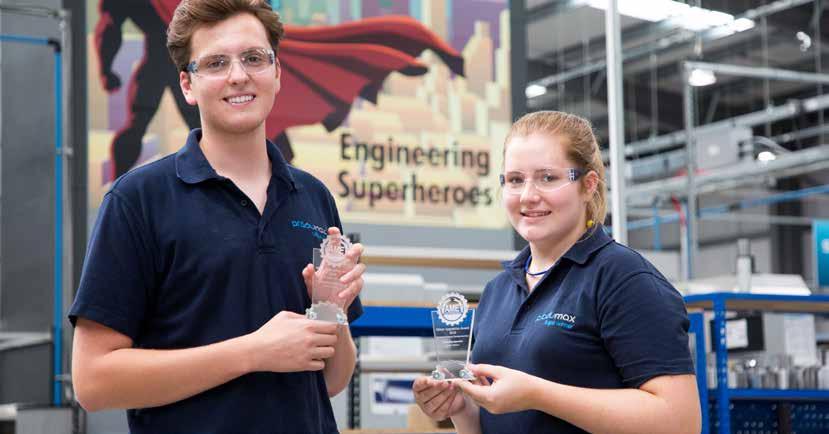
3 minute read
DIGITAL TRANSFORMATION ON A SHOESTRING
Four years ago, Digital Manufacturing on a Shoestring was started by a team at IfM. Kate Price Thomas, the programme’s Marketing and Engagement Lead, explains how Shoestring solutions have been deployed in 20 companies, helping them to start to digitalise the low-cost way and paving the way for hundreds more to do the same.
In 2018 Duncan McFarlane and his research team established Digital Manufacturing on a Shoestring in partnership with the University of Nottingham, a number of industrial supporters, and with initial funding from the UK Engineering and Physical Sciences Research Council (EPSRC).
Advertisement
The aim was to try and help small and medium-sized companies (SMEs) to start digitalising, particularly those who didn’t know where or how to start or didn’t think they had enough budget or the right in-house skills.
They began to survey and classify all the very low-cost technologies and organise them into a set of solution areas to meet the digital solution needs of small manufacturers. Their idea was to assemble solutions from “building blocks” that could be reused, adapted and combined repeatedly.
By running workshops with over 300 companies and talking to them about their business priorities and barriers to growth, the Shoestring team combined priority business needs with potential digital solutions. And from those workshops, they extracted a list of 59 digital solution areas that address the needs of small businesses.
Solution areas included systems like job tracking, so you know where a job is at any one time on a production line, or inventory tracking so you can order products in time. These are all simple, easy-to-implement solutions using low-cost tech, which can have a massive impact on efficiency and customer satisfaction, as well as a company’s sustainability credentials.
Shoestring solutions on the factory floor
In the past year alone 14 industry partners have used a Shoestring solution on their shop floor, and we’ve found that once one solution has been successfully applied, partners are keen to expand it, try another solution or go beyond Shoestring and purchase a more complex commercial digital system.
This was the case with Kemdent, a small dental manufacturer based in Swindon. The company was a classic example of a business ready to digitalise, but every time it looked at the market, it was left feeling bewildered. So, Kemdent approached us at Digital Manufacturing Week to see if we could help.
We organised an in-company workshop with its production supervisor and operations director to really understand and identify its top business needs. We then suggested solutions that could help.
By installing a low-cost temperature sensor above one of its production lines, Kemdent was able to check that the dental wax cooled at the right rate to avoid hardening too fast and causing defects in the final product. The sensor, attached to a Raspberry Pi microcomputer, sends data to a dashboard so the company can see and collect data in real time. It quickly discovered the optimal working temperature at which to control its process to minimise damage to the wax sheets during production.
Since installing that first sensor, the Kemdent team has now implemented sensors onto several production lines, improving the efficiency and quality of operations (using components costing under £200). It has also installed a large monitor on the shop floor to show employees the real-time temperature of all the production lines, helping them to identify problems quickly and have less wastage.
Another SME, Snug Homes, a Bristolbased company that supplies modular homes, came to Shoestring to explore if we could provide a solution to help trainees identify potential issues so that they could rectify quality issues quickly and avoid repetition of error. The company implemented a unified change-management solution, which meant users could upload new quality issues on a database while performing their tasks at the construction site or office, and they could then assign these issues to a person to be solved and tracked. The solution, built using opensource database software, allows all quality issues relating to a project or set of tasks to be exported for review at the project review stage.
Taking Shoestring into the community
Having proven that the Shoestring approach works, we are now looking at testing the best ways for companies to build the solutions themselves, including how to facilitate low-cost external support. We will also work with the manufacturing community to help create a library of Shoestring solutions for other companies to use or adapt.
Shoestring is still in the development phase and keen to work with any company or organisation that might like to get involved in one or more of a range of the Shoestring Digital Manufacturing activities. Visit www. digitalshoestring.net to find out more.
This article was originally published in
Kate Price Thomas kijp2@cam.ac.uk









